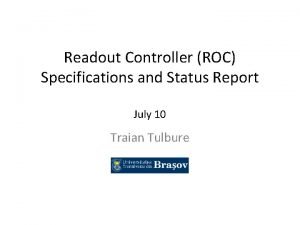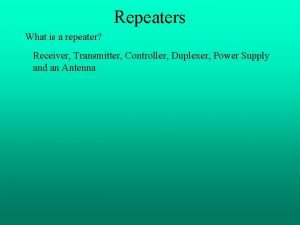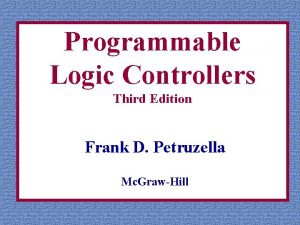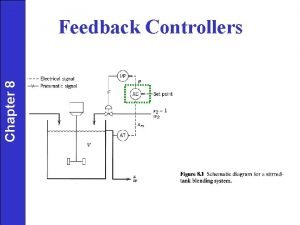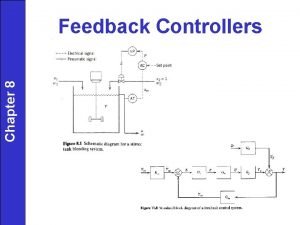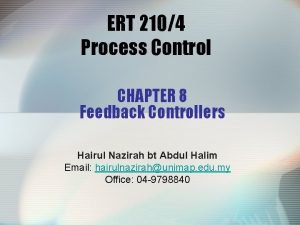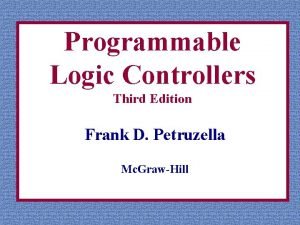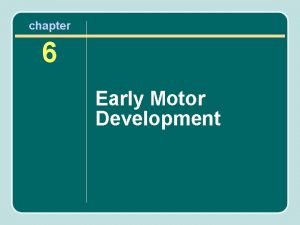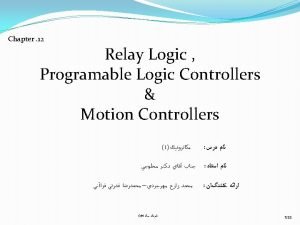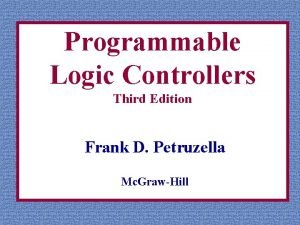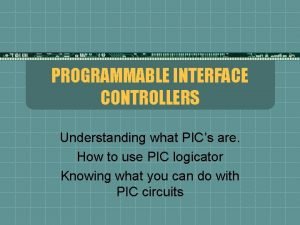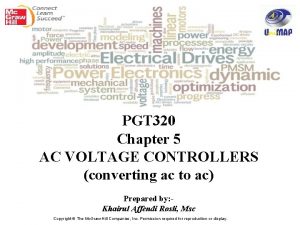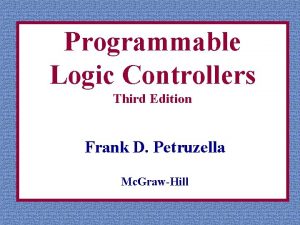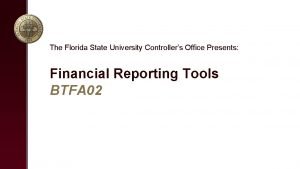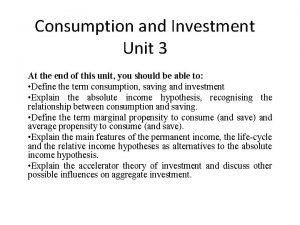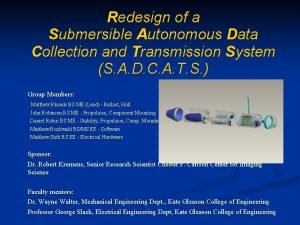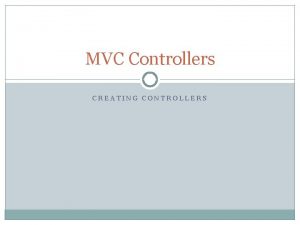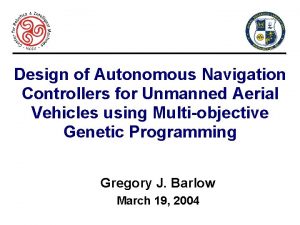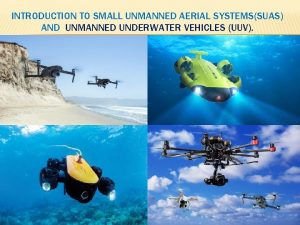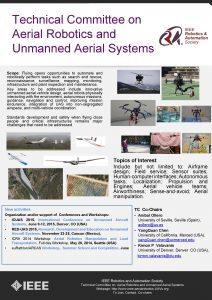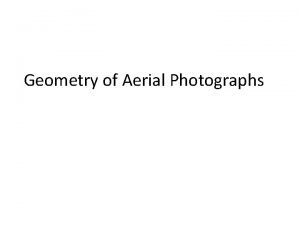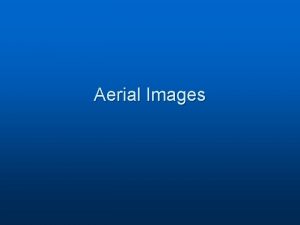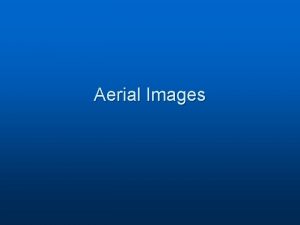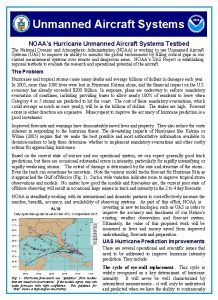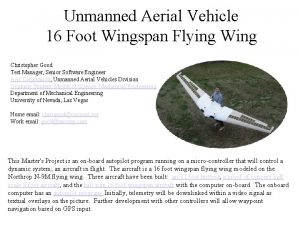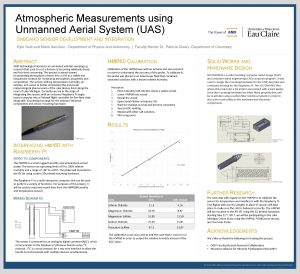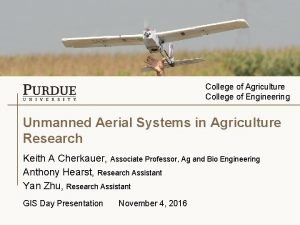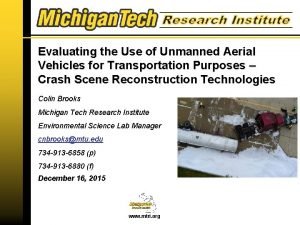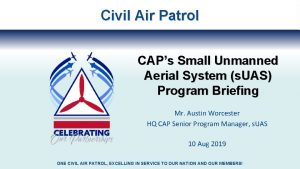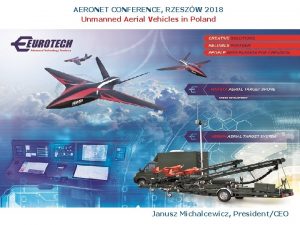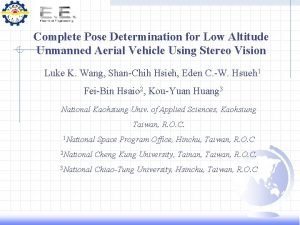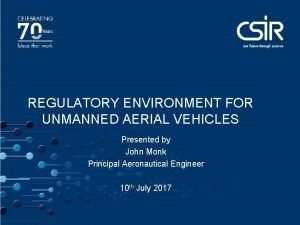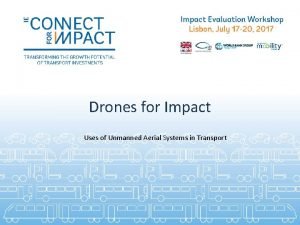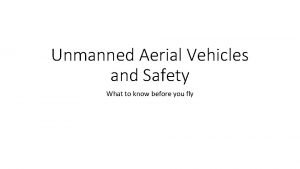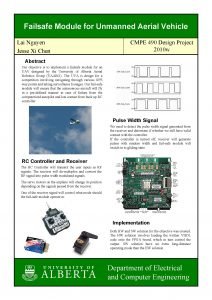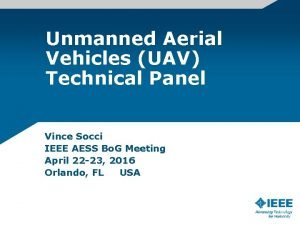Incremental Evolution of Autonomous Controllers for Unmanned Aerial

























- Slides: 25

Incremental Evolution of Autonomous Controllers for Unmanned Aerial Vehicles using Multi-objective Genetic Programming Gregory J. Barlow, Choong K. Oh, and Edward Grant North Carolina State University U. S. Naval Research Laboratory 1

Overview • • 2 Problem Unmanned Aerial Vehicle Simulation Multi-objective Genetic Programming Fitness Functions Experiments and Results Conclusions Future Work

Background We have previously evolved unmanned aerial vehicle (UAV) navigation controllers able to: • Fly to a target radar based only on sensor measurements • Circle closely around the radar • Maintain a stable and efficient flight path throughout flight 3

Problem • • • 4 We are most interested in the more difficult radar types, particularly intermittently emitting, mobile radars Evolving controllers directly on the most difficult radars yields very low rates of success We would like to create controllers able to handle all of the radar types rather than having one controller for each type

Simulation • To test the fitness of a controller, the UAV is simulated for 4 hours of flight time in a 100 by 100 square nmi area • The initial starting positions of the UAV and the radar are randomly set for each simulation trial 5

Sensors • UAVs can sense the angle of arrival (Ao. A) and amplitude of incoming radar signals 6

UAV Control Evolved Controller Sensors Roll angle Autopilot 7 UAV Flight

Transference These controllers should be transferable to real UAVs. To encourage this: • • • 8 Only the sidelobes of the radar were modeled Noise is added to the modeled radar emissions The angle of arrival value from the sensor is only accurate within ± 10°

Multi-objective GP • • 9 We had four desired behaviors which often conflicted, so we used NSGA-II (Deb et al. , 2002) with genetic programming to evolve controllers Each fitness evaluation ran 30 trials Each run had a population size of 500 Computations were done on a Beowulf cluster with 92 processors (2. 4 GHz)

Functions and Terminals Turns • Hard Left, Hard Right, Shallow Left, Shallow Right, Wings Level, No Change Sensors • Amplitude > 0, Amplitude Slope < 0, Amplitude Slope > 0, Ao. A <, Ao. A > Functions • If. Then, If. Then. Else, And, Or, Not, <, =<, >, >=, > 0, < 0, =, +, -, *, / 10

Fitness Functions Normalized distance • UAV’s flight to vicinity of the radar Circling distance • Distance from UAV to radar when in-range Level time • Time with a roll angle of zero Turn cost • 11 Changes in roll angle greater than 10°

Normalized Distance 12

Circling Distance 13

Level Time 14

Turn Cost 15

Performance of Evolution • • 16 Multi-objective genetic programming produces a Pareto front of solutions, not a single best solution. To gauge the performance of evolution, fitness values for each fitness measure were selected for a minimally successful controller.

Baseline Values Normalized Distance ≤ 0. 15 • Determined empirically Circling Distance • Average distance less than 2 nmi Level Time • 17 ≥ 1000 ~50% of time (not in-range) with roll angle = 0 Turn Cost • ≤ 4 ≤ 0. 05 Turn sharply less than 0. 5% of the time

Experiments Continuously emitting, stationary radar • Simplest radar case Intermittently emitting, stationary radar • Period of 10 minutes, duration of 5 minutes Continuously emitting, mobile radar • • States: move, setup, deployed, tear down In deployed over an hour before moving again Intermittently emitting, mobile radar • 18 Most difficult radar type for evolution

Direct Evolution Runs Radar Type 19 Total Succ. Controllers Rate Total Avg. Max. Continuously emitting, stationary radar 50 45 90% 3, 149 63 170 Continuously emitting, mobile radar 50 36 72% 2, 266 45. 3 206 Intermittently emitting, stationary radar 50 25 50% 1, 891 37. 8 156 Intermittently emitting, mobile radar 50 16 32% 569 11. 38 93

Incremental Evolution • Environmental incremental evolution was used to improve the success rate for evolving controllers • A population is evolved on progressively more difficult radar types 20

Incremental Evolution Runs Radar Type 21 Total Succ. Controllers Rate Total Avg. Max. Continuously emitting, stationary radar 50 45 90% 2, 815 56. 30 166 Continuously emitting, mobile radar 50 45 90% 2, 774 55. 48 179 Intermittently emitting, stationary radar 50 42 84% 2, 083 41. 66 143 Intermittently emitting, mobile radar 50 37 74% 1, 602 32. 04 143

Comparison 22

Intermittently emitting, mobile radar 23

Conclusions • • • 24 Autonomous navigation controllers were evolved to fly to a radar and then circle around it while maintaining stable and efficient flight dynamics Using incremental evolution dramatically increased the chances of producing successful controllers Incremental evolution produced controllers able to handle all radar types

Future Work • • • 25 We have successfully tested evolved controllers on a wheeled mobile robot equipped with an acoustic array tracking a speaker Controllers will be tested on physical UAVs for several radar types in field tests next year Distributed multi-agent controllers will be evolved to deploy multiple UAVs to multiple radars
 Unmanned space probes
Unmanned space probes We are men my liege
We are men my liege Ncp1568 controllers
Ncp1568 controllers Frc control system
Frc control system Roc-2015 ro controllers supplier
Roc-2015 ro controllers supplier Repeater link controller
Repeater link controller Programmable logic controllers frank d petruzella
Programmable logic controllers frank d petruzella Heat exchanger control
Heat exchanger control Chapter 8
Chapter 8 Riverbed magic quadrant
Riverbed magic quadrant The controllers chapter 8
The controllers chapter 8 The control plan stored in the plc is called
The control plan stored in the plc is called Rate limiters in motor development
Rate limiters in motor development Relay logic controllers
Relay logic controllers Vacillator attachment style
Vacillator attachment style Programmable logic controllers frank d petruzella
Programmable logic controllers frank d petruzella Programmable interface controllers
Programmable interface controllers Rms output voltage
Rms output voltage Plunger lift troubleshooting
Plunger lift troubleshooting Ac voltage controllers convert
Ac voltage controllers convert Programmable logic controllers frank d petruzella
Programmable logic controllers frank d petruzella Paul harlacher fsu
Paul harlacher fsu Autonomous expenditure
Autonomous expenditure Autonomous region barcelona
Autonomous region barcelona Explain relative income hypothesis
Explain relative income hypothesis Autonomous data harvesting
Autonomous data harvesting




